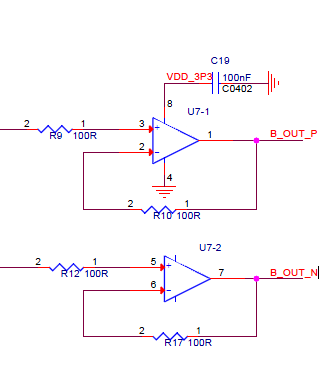Hi,
We are using the OPA2388 as a buffer for a differential output sensor. The opamps connected as buffers, with a 100 Ohm resistor in feedback. Each opamp buffers one of the differential outputs. We get good results, besides a drift we see at 85C. We've tested the output of the sensor before the buffers and after the buffers, and clearly see that the signal is ok before the buffers, but drifts after it. in all other temperatures, we don't see any drift (-40~85C). This drift stays when the temperature goes back to room temperature, and we get a hysteresis.
The drift looks exponential, like capacitor-discharge, and it drifts about 0.4mV in 45 minutes. Do you have any suggestions or insight on what may cause it?
Thanks,
Leonid.
-
Ask a related question
What is a related question?A related question is a question created from another question. When the related question is created, it will be automatically linked to the original question.

